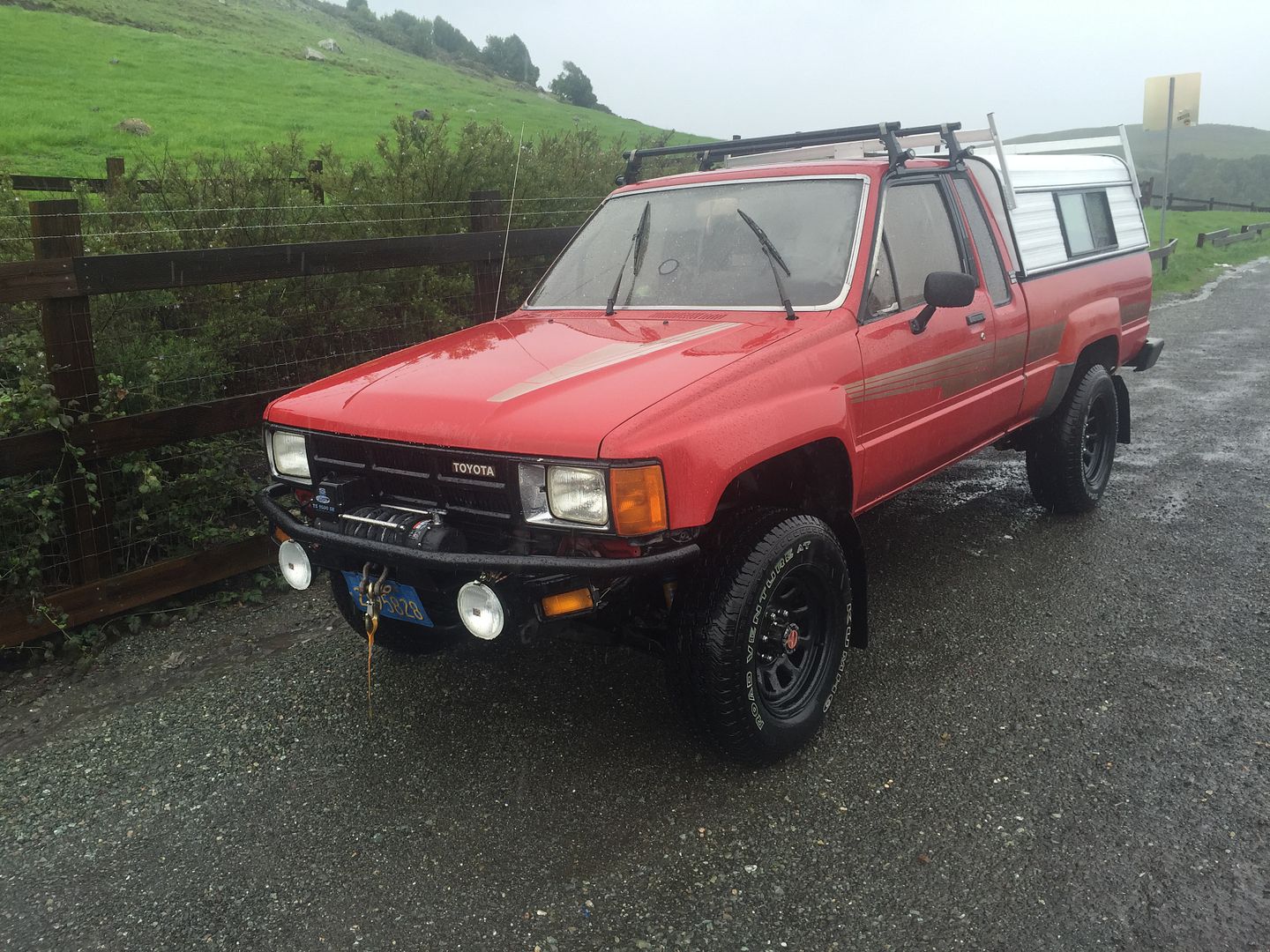I was going to say the same thing as Seth and Caffine.
I'd start with a good service (bleed the fluid, check pad/disc life, look for leaks, etc). If no issues are found and you still think you need uprated brakes after you do a thorough bleed, then I hear positive reviews from people with dual diaphragm boosters but can't help but think:
- There's more to it than just bolting up a different booster.
- That super soft pedal and loads of braking power they brag about seems like it wouldn't be very "road friendly" and wouldn't provide very good feedback.
I was going to show you some quick "brake math" and came across this guy's site. It seems he's tried a bunch of different combinations of junkyard toyota and GM parts and has a pretty good writeup of the results.
http://home.4x4wire.com/erik/4runner/brakes/
It seems your current bore is about .8125", you have 4-piston calipers with 2-pistons measuring 1.335" and 2-pistons measuring 1.685, I'll assume your pedal ratio is 4:1, and I have no idea what your booster's advantage is going to be (a 7" diaphragm at 8psi of vac produces 307.72lbs of output force) .
It seems that later Toyotas had 4-piston calipers with 1.685"dia pistons, and a pedal with a higher ratio.
100lbs of pedal force becomes 400lbs of force after the mechanical advantage.
pedal force + booster assistance becomes 707.72lbs
pir squared MC piston diameter = .581in squared.
1000lbs of force divided by .581 = 1218.1psi
- that's the output from the master cylinder
pi*r squared the piston diameter multiplied by the number of pistons in the calipers = 3.63 in^2
1218.1psi / 3.63 in squared = 335.57lbs of braking force.
If my math is correct, then it tells us that:
-
If you increase the diaphragm advantage then you increase clamping force at the calipers (but decrease pedal feel).
-
You can gain clamping force at the calipers by increasing your pedal ratio
-
If you increase caliper piston surface area (say to a later Toyota 4-puck that has 1.685" pistons) then you REDUCE the clamping force (1218.1psi / 4.46 in squared = 273.12 lbs of braking force).
-
If you decrease master cylinder size then you are going to INCREASE port pressure but move less fluid.
-
If you increase master cylinder size then you are going to DECREASE port pressure but move more fluid.
Years ago, when I read this book they mentioned that most brake upgrades aren't done to gain clamping force, but to increase surface area and reduce fade.
Good times. I'd really like to know what you find, and how it works for you (I have an '87)
![]() Iv been trying to find some solid info on what parts I can use to upgrade my brake system. I know enough about brakes to know the parts need to compliment each other to get a decent system.
I did some reading on Pirate 4x4 and Yota Tech but I could not find any threads with solid confirmed info in what parts to use together.
Right now I am thinking to get this stuff.
Iv been trying to find some solid info on what parts I can use to upgrade my brake system. I know enough about brakes to know the parts need to compliment each other to get a decent system.
I did some reading on Pirate 4x4 and Yota Tech but I could not find any threads with solid confirmed info in what parts to use together.
Right now I am thinking to get this stuff. 
































